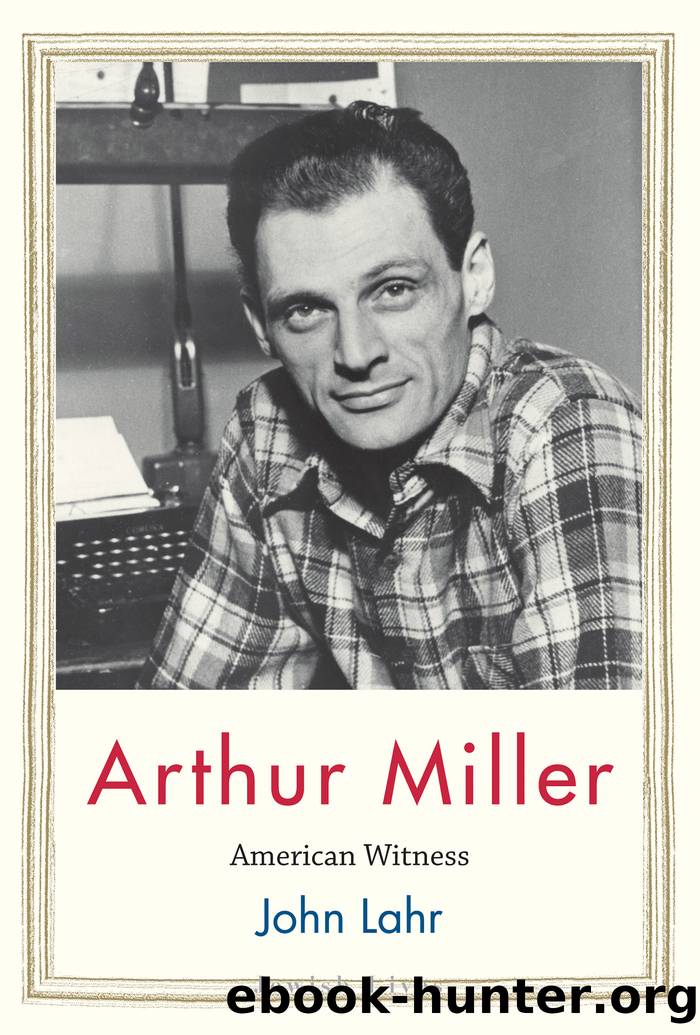Arthur Miller by John Lahr

Author:John Lahr
Language: eng
Format: epub
Publisher: Yale University Press
Published: 2022-01-15T00:00:00+00:00
After he testified, in left-wing circles Kazan went from cultural prince to pariah overnight. âI seemed to have crossed some fundamental and incontrovertible line of tolerance for human error and sin,â he wrote. He was threatened, abused, and shunned. He changed his telephone number and hired a bodyguard for his wife and family. (The ructions in Hollywood when he was chosen, four decades later, in 1999, to receive the Honorary Academy Award for Lifetime Achievement, demonstrated that in some parts of the show-biz community Kazan had still not been forgiven.) Even though he could continue to work, the crisis had made him a contractual cripple; he was relegated to the bottom of the studio heap. As Kazan put it, he was âon a great social griddle and frying.â
Two days after Kazanâs testimony, Tennessee Williams sent him an expanded draft of Camino Real to direct. Although most of the theater community rushed to judgment, Williams did not. âI take no attitude about it, one way or another, as I am not a political person and human venality is something I always expect and forgive,â he wrote to a friend. Miller, however, could not forgive. Before the testimony, at the end of their walk in the woods, according to Kazanâs diary, Miller had put his arm around Kazan and said, âDonât worry about what Iâll think. Whatever you do will be okay with me. Because your heartâs in the right place.â Kazan wrote, âIt was like the truth of a pop song title. There was no doubt that Art meant it and that he was anxious to say this to me before we separated. We parted on affectionate terms.â
But after Kazanâs testimony, Miller cold-shouldered him. Over the next few years, various friends tried to engineer a reconciliation. âGadg mourns your loss with unending sorrow,â John Steinbeck wrote to Miller in 1955, adding, âItâs wasteful that two such men should be apart. Please do something to mend this break. . . . I beg you to give it a chance. I beg you.â In 1956, at an Actors Studio benefit, Marilyn Monroe briefly reunited them. Taking Millerâs hand, she walked him across the room, took Kazanâs hand, and put their two hands together. Then, she cradled both their hands in hers. âThere was silence in the room. The music stopped. Conversation stopped,â the actress Madeleine Sherwood recalled. âMarilyn said, âIt was the most wonderful moment of my life when those two men accepted that I had put their hands together.ââ But the gesture was cosmetic. Although they would collaborate one more time, on After the Fall (1964), for all intents and purposes, the pall over their friendship never lifted. âI would never really feel toward him quite what a friend should,â Kazan wrote of Miller. âNor, I imagine, he toward me.â Kazanâs testimony and Millerâs subsequent silent treatment put paid to what Brooks Atkinson had once called âthe Kazan-Miller era of American theatre.â
Download
This site does not store any files on its server. We only index and link to content provided by other sites. Please contact the content providers to delete copyright contents if any and email us, we'll remove relevant links or contents immediately.
| Acting & Auditioning | Broadway & Musicals |
| Circus | Direction & Production |
| History & Criticism | Miming |
| Playwriting | Puppets & Puppetry |
| Stage Lighting | Stagecraft |
Call Me by Your Name by André Aciman(20371)
Ready Player One by Cline Ernest(14522)
How to Be a Bawse: A Guide to Conquering Life by Lilly Singh(7384)
Wiseguy by Nicholas Pileggi(5669)
The Kite Runner by Khaled Hosseini(5082)
On Writing A Memoir of the Craft by Stephen King(4863)
Audition by Ryu Murakami(4840)
The Crown by Robert Lacey(4722)
Call me by your name by Andre Aciman(4613)
Gerald's Game by Stephen King(4571)
Harry Potter and the Cursed Child: The Journey by Harry Potter Theatrical Productions(4439)
Dialogue by Robert McKee(4321)
The Perils of Being Moderately Famous by Soha Ali Khan(4169)
Dynamic Alignment Through Imagery by Eric Franklin(4115)
Apollo 8 by Jeffrey Kluger(3635)
Seriously... I'm Kidding by Ellen DeGeneres(3575)
The Inner Game of Tennis by W. Timothy Gallwey(3575)
How to be Champion: My Autobiography by Sarah Millican(3554)
Darker by E L James(3475)
